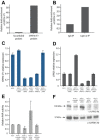The functional characterization of long noncoding RNA SPRY4-IT1 in human melanoma cells
- PMID: 25344859
- PMCID: PMC4253410
- DOI: 10.18632/oncotarget.1863
The functional characterization of long noncoding RNA SPRY4-IT1 in human melanoma cells
Abstract
Expression of the long noncoding RNA (lncRNA) SPRY4-IT1 is low in normal human melanocytes but high in melanoma cells. siRNA knockdown of SPRY4-IT1 blocks melanoma cell invasion and proliferation, and increases apoptosis. To investigate its function further, we affinity purified SPRY4-IT1 from melanoma cells and used mass spectrometry to identify the protein lipin 2, an enzyme that converts phosphatidate to diacylglycerol (DAG), as a major binding partner. SPRY4-IT1 knockdown increases the accumulation of lipin2 protein and upregulate the expression of diacylglycerol O-acyltransferase 2 (DGAT2) an enzyme involved in the conversion of DAG to triacylglycerol (TAG). When SPRY4-IT1 knockdown and control melanoma cells were subjected to shotgun lipidomics, an MS-based assay that permits the quantification of changes in the cellular lipid profile, we found that SPRY4-IT1 knockdown induced significant changes in a number of lipid species, including increased acyl carnitine, fatty acyl chains, and triacylglycerol (TAG). Together, these results suggest the possibility that SPRY4-IT1 knockdown may induce apoptosis via lipin 2-mediated alterations in lipid metabolism leading to cellular lipotoxicity.
Figures





Similar articles
-
The melanoma-upregulated long noncoding RNA SPRY4-IT1 modulates apoptosis and invasion.Cancer Res. 2011 Jun 1;71(11):3852-62. doi: 10.1158/0008-5472.CAN-10-4460. Epub 2011 May 10. Cancer Res. 2011. PMID: 21558391
-
The long noncoding RNA SPRY4-IT1 increases the proliferation of human breast cancer cells by upregulating ZNF703 expression.Mol Cancer. 2015 Feb 22;14:51. doi: 10.1186/s12943-015-0318-0. Mol Cancer. 2015. PMID: 25742952 Free PMC article.
-
Overexpression of the long non-coding RNA SPRY4-IT1 promotes tumor cell proliferation and invasion by activating EZH2 in hepatocellular carcinoma.Biomed Pharmacother. 2017 Jan;85:348-354. doi: 10.1016/j.biopha.2016.11.035. Epub 2016 Nov 28. Biomed Pharmacother. 2017. PMID: 27899259
-
The long non-coding RNA SPRY4-IT1: An emerging player in tumorigenesis and osteosarcoma.Cell Prolif. 2018 Aug;51(4):e12446. doi: 10.1111/cpr.12446. Epub 2018 Feb 27. Cell Prolif. 2018. PMID: 29484753 Free PMC article. Review.
-
A Review on the Role of SPRY4-IT1 in the Carcinogenesis.Front Oncol. 2022 Jan 13;11:779483. doi: 10.3389/fonc.2021.779483. eCollection 2021. Front Oncol. 2022. PMID: 35096580 Free PMC article. Review.
Cited by
-
LncRNAs and cancer.Oncol Lett. 2016 Aug;12(2):1233-1239. doi: 10.3892/ol.2016.4770. Epub 2016 Jun 23. Oncol Lett. 2016. PMID: 27446422 Free PMC article.
-
Colon Cancer-Upregulated Long Non-Coding RNA lincDUSP Regulates Cell Cycle Genes and Potentiates Resistance to Apoptosis.Sci Rep. 2018 May 9;8(1):7324. doi: 10.1038/s41598-018-25530-5. Sci Rep. 2018. PMID: 29743621 Free PMC article.
-
lncRNAs-EZH2 interaction as promising therapeutic target in cutaneous melanoma.Front Mol Biosci. 2023 May 31;10:1170026. doi: 10.3389/fmolb.2023.1170026. eCollection 2023. Front Mol Biosci. 2023. PMID: 37325482 Free PMC article. Review.
-
Long noncoding RNA SPRY4-IT1 promotes esophageal squamous cell carcinoma cell proliferation, invasion, and epithelial-mesenchymal transition.Tumour Biol. 2016 Aug;37(8):10871-6. doi: 10.1007/s13277-016-4962-9. Epub 2016 Feb 16. Tumour Biol. 2016. PMID: 26883252
-
Non-Coding RNAs and Splicing Activity in Testicular Germ Cell Tumors.Life (Basel). 2021 Jul 24;11(8):736. doi: 10.3390/life11080736. Life (Basel). 2021. PMID: 34440480 Free PMC article. Review.
References
-
- Carninci P, Kasukawa T, Katayama S, Gough J, Frith MC, Maeda N, Oyama R, Ravasi T, Lenhard B, Wells C, Kodzius R, Shimokawa K, Bajic VB, Brenner SE, Batalov S, Forrest AR, et al. The transcriptional landscape of the mammalian genome. Science. 2005;309(5740):1559–1563. - PubMed
-
- Cheng J, Kapranov P, Drenkow J, Dike S, Brubaker S, Patel S, Long J, Stern D, Tammana H, Helt G, Sementchenko V, Piccolboni A, Bekiranov S, Bailey DK, Ganesh M, Ghosh S, et al. Transcriptional maps of 10 human chromosomes at 5-nucleotide resolution. Science. 2005;308(5725):1149–1154. - PubMed
-
- Mercer TR, Dinger ME, Mattick JS. Long non-coding RNAs: insights into functions. Nat Rev Genet. 2009;10(3):155–159. - PubMed
-
- Mattick JS, Amaral PP, Dinger ME, Mercer TR, Mehler MF. RNA regulation of epigenetic processes. Bioessays. 2009;31(1):51–59. - PubMed
Publication types
MeSH terms
Substances
Grants and funding
LinkOut - more resources
Full Text Sources
Other Literature Sources
Medical
Miscellaneous

